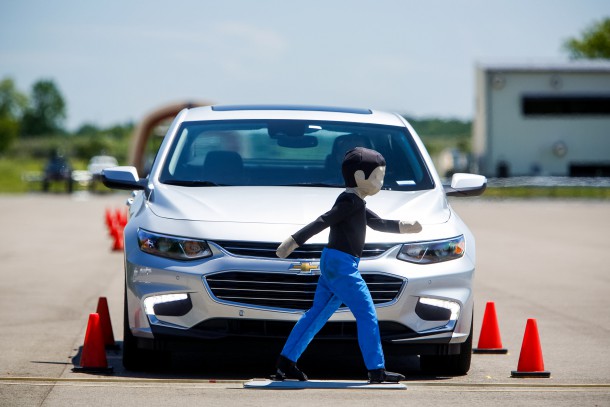Save Bacon or Save Face?
Posted on Apr 4, 2022 in Editorials | 1 comment

Isaac writes:
Recently my family was sitting around the table discussing how my youngest sister will obtain her driving permit in a month to begin the wonderful process of becoming a licensed driver. The interesting part of this conversation, and the part I hope you can offer some advice, is when we talked about safety. Are modern cars too safe for beginner drivers?
While many publications and parents say new drivers should be placed in the safest vehicle possible, I have struggled with this concept and can only wonder how safety equipment in car affects new drivers. Comparing the two vehicles that my parents are considering giving to my youngest sister, my older sister’s 2002 Saturn SC2 or my mom’s old 2008 Ford Taurus X, there is a big difference in the safety between these cars. My sister and I were given cars that lacked ABS, side or curtain airbags, ESP, and traction control. Not having features, like AB, taught my sister to be more attentive in slippery conditions.
While I will not argue against the safety these systems provide, nor their existence, I can only wonder if we are hindering the drivers of tomorrow. I wonder how modern features like blind spot monitoring, radar based cruise control, and backup cameras will affect new drivers. Personally, I like to think I am a better driver today because of the lack of safety features I had in my first couple of cars.
Any thoughts?
Sajeev answers:
My gut says that net-net, improvements in driving safety technology make us safer. My reasoning concerns other technologies distracting drivers at an alarming rate. Even if you pump your brakes faster than ABS, catch oversteer better than any yaw sensor, you can’t protect distracted drivers from injuring/killing themselves. Or bumping you, forcing you off the road and skidding into a tree.
There are valid reasons to create these features, once safety became a legitimate selling point. Safety features are a profit center: automated or electronically-assisted driving enhancements on an otherwise low(er) margin car make good money while contributing to the motoring public’s overall health.
A win-win, no?
Perhaps you are a better driver because you mastered driving a vehicle without modern safety tech: go prove it on a roadcourse during an instructional event if so inclined. But I am sure you can’t out brake ABS on a slick road, especially after a long day at work with an exhausted mind and a weary body.
My first car was a ’65 Ford Galaxie with, among other glaring tech deficiencies, possessed manual brakes and a windscreen that fogged up with every rainstorm (no factory air conditioning). I can assure you it was unpleasant when the going got rough. While I loved the Galaxie dearly, during the two weeks I used my brother’s 1985 Thunderbird 30th Anniversary before it was sold, it “sold me” on tech advancements.
So when that distracted driver crosses the middle line on wet pavement, forcing you off the road while active handling straightens up rear end wiggle on that dirt/gravel shoulder so you can re-enter with minimal shock and stress, you’ll thank your lucky stars you have those goodies to save your bacon.





.gif)


Safety equipment aside, usually it’s easier for a new driver to learn things in a smaller car with better sight lines. The Taurus X is basically a minivan. Probably not the easiest thing to learn how to parallel park. Perhaps once she gets down the actual skill and mechanics of driving, she might prefer the X, but if it becomes hers, she’ll end up being the one picking up all the friends who don’t have their own cars.